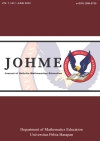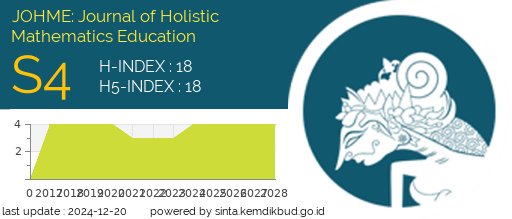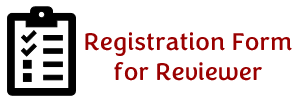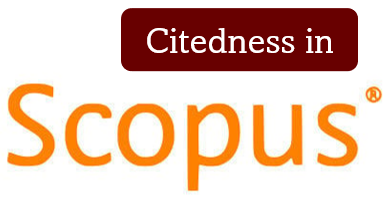RESEARCH ON STUDENTS' MATHEMATICAL ABILITY IN LEARNING MATHEMATICS IN THE LAST DECADE: A BIBLIOMETRIC REVIEW
DOI:
https://doi.org/10.19166/johme.v7i1.6867Keywords:
Mathematical Ability, Learning Mathematics, BibliometricAbstract
Mathematical ability is a cognitive ability that needs to be developed in every student because the mathematical ability is closely related to solving problems that involve the relationship of numerical symbols with students' cognitive activities. This study aims to look at the description of previous research related to mathematical abilities in learning mathematics in the last decade using bibliometric analysis methods. The data taken from the Scopus database was refined so that it became 157 publications. The United States of America is the most influential country and has high cooperation with other countries in this field. The focus of this research is: 1) ICT, Augmented reality, Computational thinking, and university; 2) mathematical problems, pre-service teachers, and higher education: 3) mathematics abilities, mathematics literacy, and outcomes; 4) high mathematical ability, technology and critical thinking ability. The results of this study can be used as a reference for future researchersReferences
Agoro, A. A. (2015). Instructional strategies, mathematical ability, mode of entry, and gender as correlates of pre-service teachers’ performance in integrated science in Nigerian colleges of education. Journal of the International Society for Teacher Education, 19(1), 18-28. Retrieved from https://files.eric.ed.gov/fulltext/EJ1177056.pdf
Anistyasari, Y., Ekohariadi, Munoto, Nurlaela, L., & Sumbawati, M. S. (2019). Analysis of computational thinking skill predictors on information technology education students. The 1st International Conference on Education, Sciences and Technology, 2, 109-114. Retrieved from https://series.gci.or.id/assets/papers/icestech-2019-133.pdf
Barbosa, H. H. (2013). Early mathematical abilities in hearing and deaf children. Cadernos CEDES, 33(91), 333-347. https://doi.org/10.1590/S0101-32622013000300003
Barizah, N., & Jupri, A. (2019). The analysis of mathematical communication ability for students in quadrilateral at 8th grade on Islamic junior high school. 1st International Seminar STEMEIF (Science, and Mathematics Learning International Forum), 296-302. Retrieved from https://digitallibrary.ump.ac.id/341/2/37.%20Full%20Paper_Barizah.pdf
Benyamin, Qohar, A., & Sulandra, I. M. (2021). Analisis kemampuan berpikir kritis siswa SMA Kelas X IPA dalam memecahkan soal cerita ditinjau dari gender dan kemampuan matematika. Edumatica: Jurnal Pendidikan Matematika, 11(1), 28-41. Retrieved from https://online-journal.unja.ac.id/edumatica/article/view/12297/10924
Bezuidenhout, H. S., & Henning, E. (2022). The intersect of early numeracy, vocabulary, executive functions and logical reasoning in grade R. Pythagoras, 43(1), 1-8. https://doi.org/10.4102/PYTHAGORAS.V43I1.646
Boyd, W., Foster, A., Smith, J., & Boyd, W. E. (2014). Feeling good about teaching mathematics: Addressing anxiety amongst pre-service teachers. Creative Education, 5(4), 207-217. https://doi.org/10.4236/ce.2014.54030
Bulos, F. B. (2021). Mathematics vocabulary and mathematical ability of grade 7 students. International Journal of Innovative Science and Research Technology, 6(1), 1071-1077. Retrieved from https://ijisrt.com/assets/upload/files/IJISRT21JAN531.pdf
Chen, X., Wang, S., Tang, Y., & Hao, T. (2019). A bibliometric analysis of event detection in social media. Online Information Review, 43(1), 29-52. https://doi.org/10.1108/OIR-03-2018-0068
Chen, X., Zhou, J., Wang, J., Wang, D., Liu, J., Shi, D., Yang, D., & Pan, Q. (2022). Visualizing status, hotspots, and future trends in mathematical literacy research via knowledge graph. Sustainability, 14(21), 1-19. https://doi.org/10.3390/su142113842
Edwards, A. (2013). The mathematical abilities of children with cochlear implants. Child Neuropsychology, 19(2), 127-142. https://doi.org/10.1080/09297049.2011.639958
Elofsson, J., Englund Bohm, A., Jeppsson, C., & Samuelsson, J. (2018). Physical activity and music to support pre-school children’s mathematics learning. Education 3-13, 46(5), 483-493. https://doi.org/10.1080/03004279.2016.1273250
Ernawati, A. M. F. (2020). Analisis kemampuan matematis dalam menyelesaikan soal PISA pada konten kuantitas. Math Didactic: Jurnal Pendidikan Matematika, 6(2), 212-225. Retrieved from https://jurnal.stkipbjm.ac.id/index.php/math/article/view/921/545
Etang, M. A., & Regidor, R. (2022). Students’ mathematical beliefs and attitudes as predictors to students’ mathematical ability. International Journal of Education and Social Science Research, 5(3), 23-60. https://doi.org/10.37500/ijessr.2022.5303
Fawziawati, D. (2022). Numerical literacy approach in mathematics education in junior high school. Research and Development Journal of Education, 8(2), 525-535. https://doi.org/10.30998/rdje.v8i2.13266
Febriana, D. F., Amin, S. M., & Wijayanti, P. (2019). Concreteness fading process of elementary school students based on mathematical ability. Journal of Physics: Conference Series, 1157(4), 1-5. https://doi.org/10.1088/1742-6596/1157/4/042049
Fogliati, V. J. (2013). Stereotype threat reduces motivation to improve: Effects of stereotype threat and feedback on women’s intentions to improve mathematical ability. Psychology of Women Quarterly, 37(3), 310-324. https://doi.org/10.1177/0361684313480045
Guillaume, M., Nys, J., Mussolin, C., & Content, A. (2013). Differences in the acuity of the approximate number system in adults: The effect of mathematical ability. Acta Psychologica, 144(3), 506-512. https://doi.org/10.1016/j.actpsy.2013.09.001
Gunur, B., Ramda, A. H., & Makur, A. P. (2019). Pengaruh pendekatan problem based learning berbantuan masalah open-ended terhadap kemampuan berpikir kritis ditinjau dari sikap matematis siswa. JOHME: Journal of Holistic Mathematics Education, 3(1), 1-15. https://doi.org/10.19166/johme.v3i1.1912
Han, Z. (2013). Relation between brain architecture and mathematical ability in children: A DBM study. Magnetic Resonance Imaging, 31(10), 1645-1656. https://doi.org/10.1016/j.mri.2013.08.008
Hassan, A. K. (2021). Multiple mathematical representations according to the (Lesh) Model of high school students and its relationship to their mathematical ability. Journal of Contemporary Issues in Business and Government, 27(3), 2200-2211. Retrieved from https://www.researchgate.net/publication/351416210_Multiple_Mathematical_Representations_According_to_the_Lesh_Model_of_High_School_Students_and_Its_Relationship_to_Their_Mathematical_Ability
Hayyu, A. N., Dafik, Tirta, I. M., Wangguway, Y., & Kurniawati, S. (2020). The analysis of the implementation inquiry based learning to improve student mathematical proving skills in solving dominating metric dimention number. Journal of Physics: Conference Series, 1538(1), 1-13. https://doi.org/10.1088/1742-6596/1538/1/012093
Isnani, Waluya, S. B., Rochmad, & Wardono. (2020). Analysis of mathematical creativity in mathematics learning is open ended. Journal of Physics: Conference Series, 1511(1), 1-6. https://doi.org/10.1088/1742-6596/1511/1/012102
Kattou, M., Kontoyianni, K., Pitta-Pantazi, D., & Christou, C. (2013). Connecting mathematical creativity to mathematical ability. ZDM: International Journal on Mathematics Education, 45(2), 167-181. https://doi.org/10.1007/s11858-012-0467-1
Kessels, U., & Steinmayr, R. (2013). How valuing school is related to student’s verbal and mathematical ability self-concepts. Zeitschrift für Pädagogische Psychologie, 27(1), 105-113. https://doi.org/10.1024/1010-0652/a000093
Larkin, K., Kortenkamp, U., Ladel, S., & Etzold, H. (2019). Using the ACAT framework to evaluate the design of two geometry apps: An exploratory study. Digital Experiences in Mathematics Education, 5(1), 59-92. https://doi.org/10.1007/s40751-018-0045-4
Ludwig, K. U., Sämann, P., Alexander, M., Becker, J., Bruder, J., Moll, K., Spieler, D., Czisch, M., Warnke, A., Docherty, S. J., Davis, O. S. P., Plomin, R., Nöthen, M. M., Landerl, K., Müller-Myhsok, B., Hoffmann, P., Schumacher, J., Schulte-Körne, G., & Czamara, D. (2013). A common variant in Myosin-18B contributes to mathematical abilities in children with dyslexia and intraparietal sulcus variability in adults. Translational Psychiatry, 3(2), 1-8. https://doi.org/10.1038/tp.2012.148
Marchy, F., Murni, A., Kartini, & Muhammad, I. (2022). The effectiveness of using problem based learning (PBL) in mathematics problem solving ability for junior high school students. AlphaMath Journal of Mathematics Education, 8(2), 185-198. https://doi.org/10.30595/alphamath.v8i2.15047
Mayani, I., Suripah, & Muhammad, I. (2022). Analysis of students’ errors in solving statistical problems: A case of 8th grade students at SMPN 4 Siak Hulu, Indonesia. Jurnal Pendidikan MIPA, 23(4), 1827-1838. https://doi.org/10.23960/jpmipa/v23i2.pp1827-1838
Moher, D., Liberati, A., Tetzlaff, J., & Douglas. (2009). Preferred reporting items for systematic reviews and meta-analyzes: The PRISMA statement. BMJ, 339, 1-8. https://doi.org/10.1136/bmj.b2535
Muhammad, I., Elmawati, Samosir, C. M., & Marchy, F. (2023). Bibliometric analysis: Research on articulate storylines in mathematics learning. EduMa: Mathematics Education Learning and Teaching, 12(1), 77-87. Retrieved from https://www.syekhnurjati.ac.id/jurnal/index.php/eduma/article/view/12607/5037
Muhammad, I., Mukhibin, A., Naser, A. M., & Dasari, D. (2022). Bibliometric analysis: Research trend of interactive learning media in mathematics learning in Indonesia. Prisma Sains: Jurnal Pengkajian Ilmu dan Pembelajaran MIPA IKIP Mataram, 11(1), 10-22. Retrieved from https://e-journal.undikma.ac.id/index.php/prismasains/article/view/6595/3989
Muldoon, K., Towse, J., Simms, V., Perra, O., & Menzies, V. (2013). A longitudinal analysis of estimation, counting skills, and mathematical ability across the first school year. Developmental Psychology, 49(2), 250-257. https://doi.org/10.1037/a0028240
Nurutami, A., Riyadi, R., & Subanti, S. (2018). The analysis of students mathematical literacy based on mathematical ability. Proceedings of the Mathematics, Informatics, Science, and Education International Conference (MISEIC 2018). https://doi.org/10.2991/miseic-18.2018.40
Özsoy, G., Temur, Ö. D., & Desoete, A. (2022). Typical and atypical mathematics learning: What do we learn from recent studies? International Electronic Journal of Elementary Education, 14(3), 195-198. https://doi.org/10.26822/iejee.2022.238
Penner-Wilger, M., & Anderson, M. L. (2013). The relation between finger gnosis and mathematical ability: Why redeployment of neural circuits best explains the finding. Frontiers in Psychology, 4, 1-9. https://doi.org/10.3389/fpsyg.2013.00877
Phoong, S. Y., Khek, S. L., & Phoong, S. W. (2022). The bibliometric analysis on finite mixture model. SAGE Open, 12(2), 1-13. Retrieved from https://journals.sagepub.com/doi/pdf/10.1177/21582440221101039
Primayanti, G., Suwu, S. E., & Appulembang, O. D. (2018). Penerapan metode drill untuk meningkatkan kemampuan komunikasi matematis siswa kelas VIII SMP Lentera Way Pengubuan pada topik persamaan garis lurus. JOHME: Journal of Holistic Mathematics Education, 1(2), 135-149. https://doi.org/10.19166/johme.v1i2.867
Ramadhaniyati, R., Siregar, K. D. P., Muhammad, I., & Triansyah, F. A. (2023). Guide discovery learning (GDL) in education: A bibliometric analysis. Journal on Education, 5(4), 11473-11484. Retrieved from https://jonedu.org/index.php/joe/article/view/2094/1734
Sanjaya, A., Johar, R., Ikhsan, M., & Khairi, L. (2018). Students’ thinking process in solving mathematical problems based on the levels of mathematical ability. Journal of Physics: Conference Series, 1088, 1-7. https://doi.org/10.1088/1742-6596/1088/1/012116
Sanusi, N., Triansyah, F. A., Muhammad, I., & Susanti, S. (2023). Analisis bibliometrik: Penelitian communication skills pada pendidikan tinggi. JIIP - Jurnal Ilmiah Ilmu Pendidikan, 6(3), 1694-1701. https://doi.org/10.54371/jiip.v6i3.1763
Solovieva, Y., Lazaro, E., & Quintanar, L. (2013). Assessment of previous mathematical abilities in urban and rural preschool children. Cultura and Educación, 25(2), 199-212. https://doi.org/10.1174/113564013806631336
Starr, A., Libertus, M. E., & Brannon, E. M. (2013). Number sense in infancy predicts mathematical abilities in childhood. Proceedings of the National Academy of Sciences of the United States of America, 110(45), 18116-18120. https://doi.org/10.1073/pnas.1302751110
Suseelan, M., Chew, C. M., & Chin, H. (2022). Research on mathematics problem solving in elementary education conducted from 1969 to 2021: A bibliometric review. International Journal of Education in Mathematics, Science and Technology, 10(4), 1003-1029. https://doi.org/10.46328/ijemst.2198
Tibber, M. S. (2013). Sensitivity to numerosity is not a unique visuospatial psychophysical predictor of mathematical ability. Vision Research, 89, 1-9. https://doi.org/10.1016/j.visres.2013.06.006
Van der Ven, S. H. G., van der Maas, H. L. J., Straatemeier, M., & Jansen, B. R. J. (2013). Visuospatial working memory and mathematical ability at different ages throughout primary school. Learning and Individual Differences, 27, 182-192. https://doi.org/10.1016/j.lindif.2013.09.003
Vicente, S., Rosales, J., Chamoso, J. M., & Munez, D. (2013). Analyzing educational practice in Spanish primary education mathematics classes: A tentative explanation for students’ mathematical ability. Cultura y Educacion, 25(4), 535-548. https://doi.org/10.1174/113564013808906799
Willingham, J. C., Barlow, A. T., Stephens, D. C., Lischka, A. E., & Hartland, K. S. (2021). Mindset regarding mathematical ability in K-12 teachers. School Science and Mathematics, 121(4), 234-246. https://doi.org/10.1111/ssm.12466
Xie, F., Zhang, L., & Chen, X., & Xin, Z. (2020). Is spatial ability related to mathematical ability: A meta-analysis. Educational Psychology Review, 32(1), 113-155. https://doi.org/10.1007/s10648-019-09496-y
Young, C. J., Levine, S. C., & Mix, K. S. (2018). The connection between spatial and mathematical ability across development. Frontiers in Psychology, 9, 1-7. https://doi.org/10.3389/fpsyg.2018.00755
Yunianto, Y., & Cahyono, A. N. (2021). Learning media development to improve students’ spatial mathematical ability assisted by mobile phones using augmented reality. Unnes Journal of Mathematics Education, 10(3), 182-193. Retrieved from https://journal.unnes.ac.id/sju/index.php/ujme/article/view/53607/20984
Yusupova, N. X. (2021). The role of tests in determining the mathematical ability of students. Central Asian Journal of Mathematical Theory and Computer Sciences, 2(12), 25-28. Retrieved from https://cajmtcs.centralasianstudies.org/index.php/CAJMTCS/article/view/139/121
Zandundo, A., Puyuelo, M., & Lira, E. (2020). The relationship between oral language and mathematics competencies in elementary school. European Proceedings of Social and Behavioural Sciences, 5(35), 320-330. https://doi.org/10.15405/epsbs.2020.05.35
Zetriuslita, Nofriyandi, & Istikomah, E. (2020). The increasing self-efficacy and self-regulated through geogebra based teaching reviewed from initial mathematical ability (IMA) level. International Journal of Instruction, 14(1), 587-598. https://doi.org/10.29333/IJI.2021.14135A
Zyoud, S. H., Shakhshir, M., Koni, A., Shahwan, M., Jairoun, A. A., & Al-Jabi, S. W. (2022). Olfactory and gustatory dysfunction in covid-19: A global bibliometric and visualized analysis. Annals of Otology, Rhinology and Laryngology, 44(8), 1-9. https://doi.org/10.1177/00034894221082735Downloads
Additional Files
Published
How to Cite
Issue
Section
License
Authors who publish with this journal agree to the following terms:
1) Authors retain copyright and grant the journal right of first publication with the work simultaneously licensed under a Creative Commons Attribution License (CC-BY-SA 4.0) that allows others to share the work with an acknowledgement of the work's authorship and initial publication in this journal.
2) Authors are able to enter into separate, additional contractual arrangements for the non-exclusive distribution of the journal's published version of the work (e.g., post it to an institutional repository or publish it in a book), with an acknowledgement of its initial publication in this journal.
3) Authors are permitted and encouraged to post their work online (e.g., in institutional repositories or on their website). The final published PDF should be used and bibliographic details that credit the publication in this journal should be included.”










